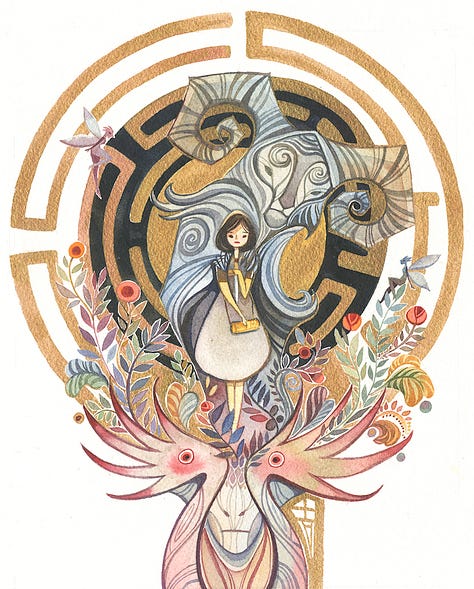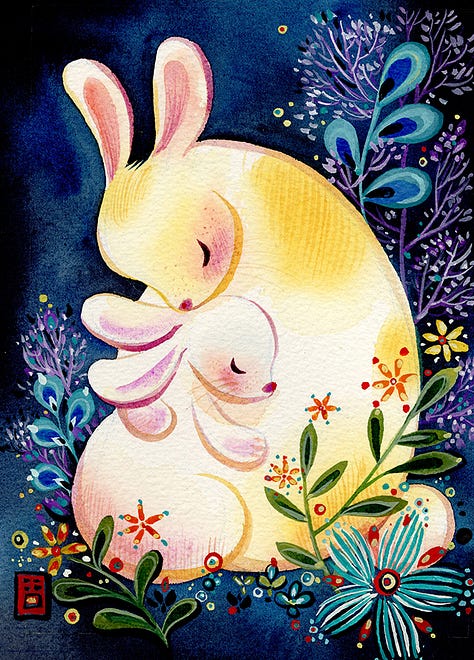Recently, my agent reminded me to update my portfolio on the agency's website. When I reviewed my portfolio, I realized that some of my older illustrations needed to be updated. However, since then, I have created new books and illustrations, my skills have grown, and my style has evolved. I immediately uploaded my latest work and thought it would be fun to share some tips on creating a solid portfolio that can help you get the proper attention to propel your career and achieve your goals.
I used to get super stressed out whenever I had to create a new portfolio. Over the years, I've picked up some valuable insights about the portfolio review process from my time working in the animation and publishing industries. As someone who has also reviewed portfolios, I've discovered some "golden rules" that can make the whole process easier and stress-free. Whether you're just starting or you're a seasoned pro looking to take your career to the next level, these tips can help you create a great first impression and open up exciting new opportunities.
1: Quality trumps quantity!
When I was starting out, I made a big mistake by including a little bit of everything in my portfolio, trying to make it appear well-rounded and seasoned. It was supposed to show my versatility, but it backfired and made my portfolio look unprofessional.
It's better to showcase only your best-quality work in your portfolio. This means displaying pieces that best represent your skills and artistic vision as an artist, while meeting the industry standards you aspire to achieve in your career.
If you don't have many examples of your work to present, it's better to highlight a few outstanding pieces instead of a mix of mediocre and excellent ones. This way, you show that you can consistently deliver high-quality work at a professional level.
2: How many pieces of art is a good number?
When it comes to submitting a portfolio, a good rule of thumb is to have around 10-15 pieces unless the place you're submitting to has specific requirements. However, if you have a diverse range of high-quality illustrations, you can include up to 20-25 pieces to showcase your versatility.
It's important to keep your portfolio concise, even if all the pieces are of high quality. The reviewers go through many submissions every day, and their attention span is limited. Your submission should be short and sweet to grab their attention.
Once you receive the first email or phone call expressing interest in your work, you can share more of your work to generate enthusiasm about working with you.
3: How to choose the perfect piece from a collection?
When it comes to publishing children's books, you need to consider not only the quality of your illustrations but also select the pieces that best showcase your artistic passion, vision, and voice. Your work should portray who you are as an artist.
Be mindful to select art that reflects your vision and nurtures it as your career progresses.
For example, I like to play around with different art styles as a hobby, but I only add the ones that showcase my skills and match my goals to my professional portfolio.
It is less pressure to think of the portfolio as the representation of ourselves as artists, which can always be updated and reshaped as we grow and evolve. This means you don't have to worry about getting everything perfect in one go. Start with what you feel confident about and slowly build your portfolio over time.



4: Avoid fan art
Do you enjoy creating fan art for your favorite movies, TV shows, or games? It can be a really fun and creative way to express your passion and learn from other talented artists. However, it's important to keep in mind that including fan art in your professional portfolio is generally not considered appropriate. This is because while you may have added your own personal style and interpretation to the original concept, the idea for the art was still created by someone else. If you're looking to share your fan art with others, it's best to showcase it on social media and other platforms where you can connect with like-minded fans and show off your skills. This will help you avoid any potential issues with plagiarism and ensure that you're sharing your work in a safe and positive way.
5: Let your art speak for you.
When it comes to your art, it's important to let it speak for itself and for you. Your art portfolio should be all about showcasing your amazing creations. While it's okay to add a caption to introduce the art or share your creative process, keep the writing short and sweet, so it won’t distract the reviewers from your art. If you feel like you need to write a small paragraph to explain a piece, it might be a sign that it's not quite ready to be included in your portfolio just yet.



Building a portfolio is a journey, so take your time and be kind to yourself along the way. Sometimes, it may take a few attempts to get it right, but that's okay. When I was first crafting my portfolio, I faced a lot of rejection before discovering what worked best. While rejection can be tough, it's an opportunity to do better for the next round.
These 5 tips have helped me build and grow my portfolio, and I hope they'll be beneficial to you as well.
Join my chat
A private space for us to converse and connect
Today I’m announcing a brand new addition to my Substack publication: the ✏️ Lines + Letters From My Desk subscriber chat.
This is a conversation space in the Substack app that I set up exclusively for my subscribers — kind of like a group chat or live hangout. I’ll post short prompts, thoughts, and updates that come my way, and you can jump into the discussion.
To join our chat, you’ll need to download the Substack app, now available for both iOS and Android. Chats are sent via the app, not email, so turn on push notifications so you don’t miss conversation as it happens.
How to get started
Download the app by clicking this link or the button below. Substack Chat is now available on both iOS and Android.
Open the app and tap the Chat icon. It looks like two bubbles in the bottom bar, and you’ll see a row for my chat inside.
That’s it! Jump into my thread to say hi, and if you have any issues, check out Substack’s FAQ.






